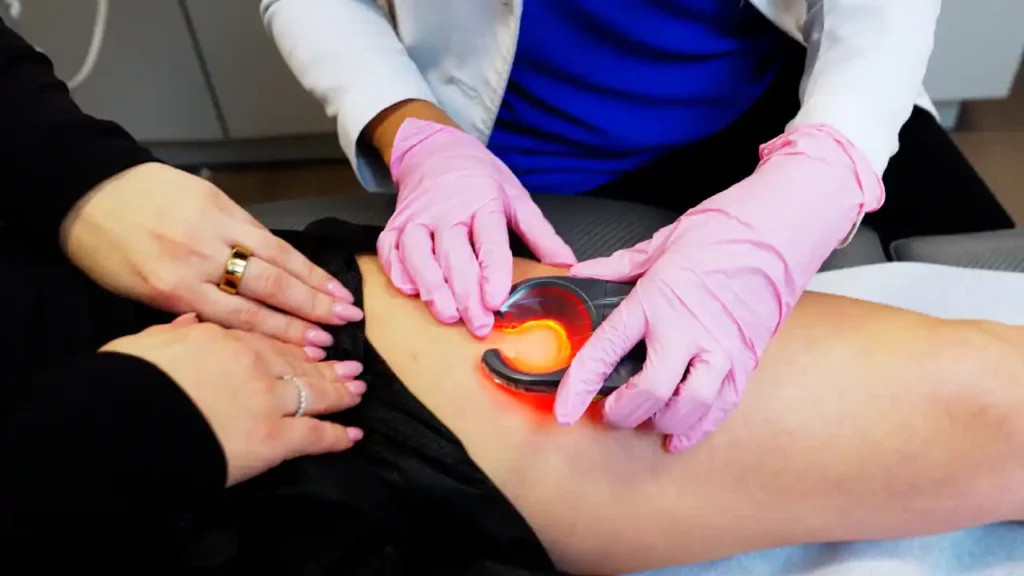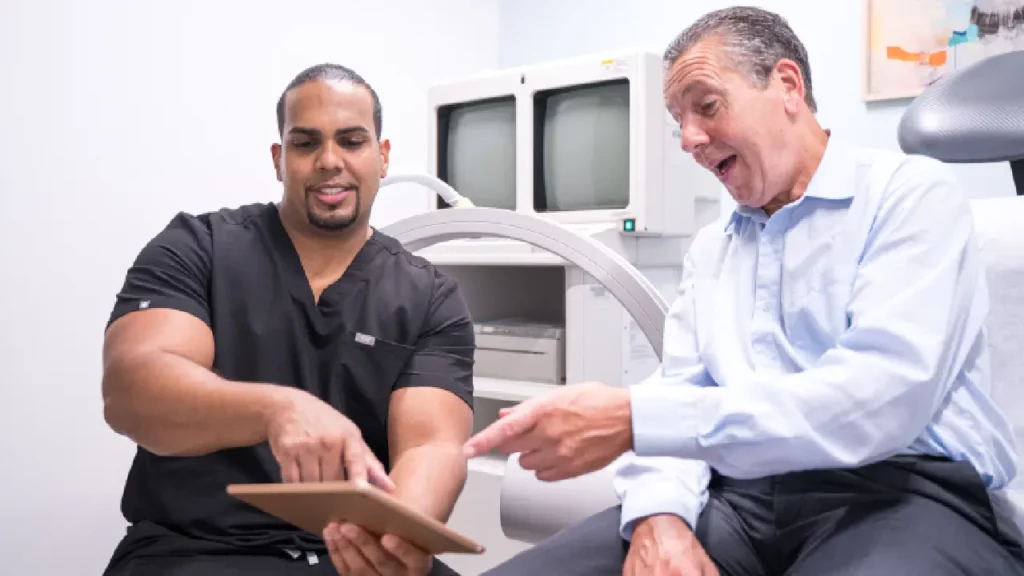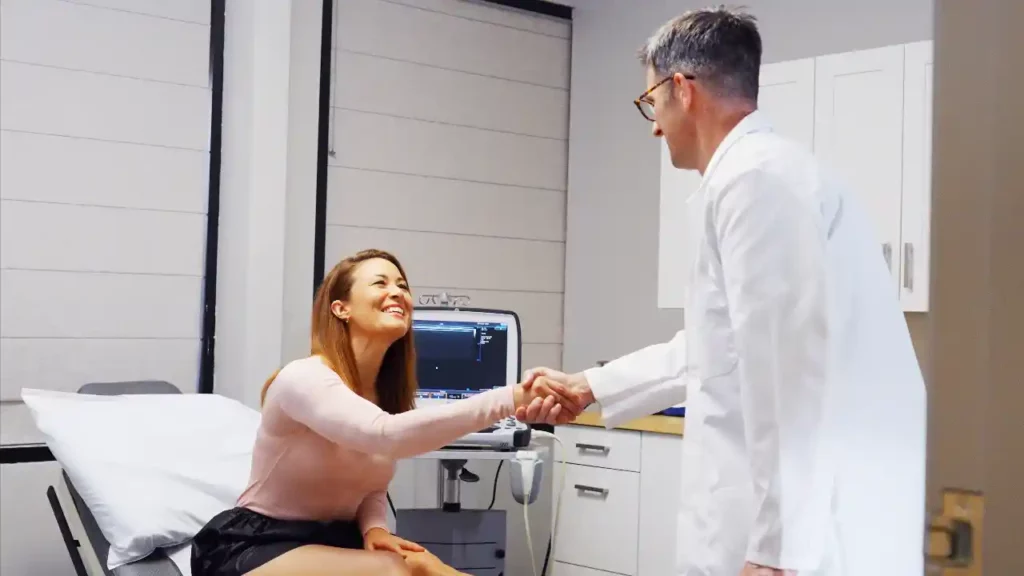Fibroid Embolization: Top Treatment for Uterine Fibroids
You’ve been experiencing persistent pelvic pain, heavy menstrual bleeding, and unusual pressure in your abdomen for months. Daily activities are becoming harder, and the discomfort is affecting your quality of life. If these symptoms sound familiar, they might point to uterine fibroids, a common condition affecting millions of women worldwide.
Fortunately, you don’t have to live with these debilitating symptoms. At Vein Treatment, we offer uterine fibroid embolization (UFE), a minimally invasive procedure that provides relief without surgery. This innovative approach is gaining popularity for its safety, effectiveness, and quick recovery time. In this article, we’ll explore fibroid embolization, how it works, and why it’s considered the best treatment option for uterine fibroids.
What is uterine fibroid embolization?
Uterine fibroid embolization (UFE) is a minimally invasive procedure that treats uterine fibroids, which are non-cancerous growths in or around the uterus. These fibroids can cause symptoms such as heavy bleeding, pelvic pain, frequent urination, and even infertility in some cases. Unlike traditional surgical treatments like hysterectomy, UFE preserves your uterus while addressing the root cause of your symptoms. The goal of UFE is to block the blood supply to the fibroids, causing them to shrink and relieving the associated symptoms.
How does uterine fibroid embolization work?
At Vein Treatment, UFE is performed by skilled, board-certified physicians who specialize in minimally invasive vascular procedures. During the procedure, your physician uses a tiny catheter to deliver embolic agents into the uterine arteries supplying blood to the fibroids. These agents block the blood flow, depriving the fibroids of oxygen and nutrients, which causes them to shrink over time. The procedure is typically performed under local anesthesia with sedation.
Because it’s minimally invasive, there’s no need for large incisions, and the recovery time is significantly shorter than traditional surgeries. Patients can typically return to their daily routines within one to two weeks. If you’re concerned about fibroid embolization recovery time, rest assured that the procedure helps minimize downtime while providing long-lasting relief.
Why is UFE considered the best treatment for uterine fibroids?
Minimally invasive approach
Unlike traditional surgical treatments like hysterectomy (removal of the uterus) or myomectomy (surgical removal of fibroids), UFE does not involve large incisions or surgery. Instead, the process begins with a tiny puncture in the skin, typically in the groin or wrist, to access the uterine arteries through a thin catheter. This reduces physical trauma, resulting in a quicker procedure, minimal scarring, and fewer postoperative risks.
Moreover, the minimally invasive nature of UFE means less emotional strain. Many women find surgical procedures difficult due to their invasiveness and potential complications. UFE’s gentle approach provides a safer alternative, allowing you to address your symptoms without enduring the challenges of traditional surgeries.
Preserves the uterus
For women who wish to retain their uterus, whether for reproductive reasons or personal preference, UFE is an excellent option. While a hysterectomy eliminates fibroids by removing the uterus entirely, it permanently ends the possibility of pregnancy. Even myomectomy, which removes individual fibroids, may involve risks that could affect fertility.
UFE works differently—it doesn’t involve cutting or removing uterine tissue. Instead, it focuses on shrinking fibroids by cutting off their blood supply. This preserves the overall integrity and functionality of your uterus, ensuring that reproductive potential is maintained. Women who value their natural anatomy and fertility will find UFE to be an empowering choice.
Short recovery time
UFE involves a shorter recovery period than traditional surgeries. With procedures like hysterectomy, recovery can take six to eight weeks, during which patients often face substantial pain and activity restrictions. In contrast, UFE patients can typically resume light activities within two to three days and return to full routines in one to two weeks.
This faster recovery is particularly beneficial for women with demanding schedules, whether due to work, family, or personal commitments. You can avoid extended hospital stays and quickly return to the things that matter most to you.
Highly effective results
Studies and clinical data have consistently demonstrated that UFE has a high success rate in managing fibroid symptoms. Approximately 85-90% of women who undergo UFE experience relief from symptoms such as heavy bleeding, pelvic pain, pressure, and frequent urination. Over time, the treated fibroids shrink significantly, improving the patient’s quality of life.
What sets UFE apart is its ability to address multiple fibroids simultaneously. Whether you have a single large fibroid or multiple smaller ones, UFE targets the underlying blood supply to all fibroids, leading to comprehensive symptom relief. This holistic approach ensures that patients achieve long-term results without additional invasive treatments.
Low risk of complications
Traditional surgeries for fibroids, such as hysterectomy and myomectomy, carry inherent risks, including excessive blood loss, infections, and adverse reactions to general anesthesia. UFE is performed using local anesthesia with mild sedation, which reduces these risks significantly.
Because UFE is a minimally invasive procedure, complications like deep vein thrombosis, infections, or prolonged recovery are rare. The most common side effects—such as mild cramping, fatigue, or nausea—are temporary and manageable with pain medications.
Fibroid embolization recovery time
UFE involves minimal recovery time. After the procedure, you’ll likely experience mild cramping and fatigue, which can be managed with over-the-counter pain medications. Most patients return home the same day and can resume light activities within 2–3 days. By the end of the first week, many women notice a significant reduction in their symptoms.
Covered by most insurance plans
UFE is widely covered by most insurance providers. As a treatment for uterine fibroids, the procedure’s accessibility makes it a viable option for women seeking effective relief. At Vein Treatment, we go a step further by offering insurance verification before your appointment. This helps you understand your coverage and avoid unexpected out-of-pocket expenses.









